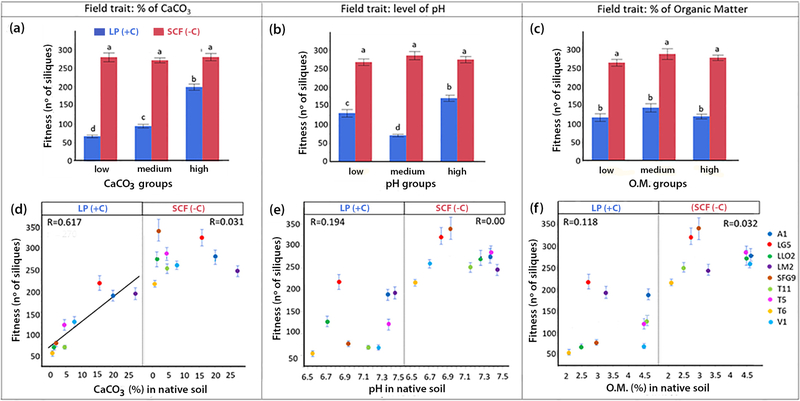Figure 2.
Fitness (number of siliques) of A. thaliana demes at both common garden experimental sites, Santa Coloma de Farners (SCF) with carbonate-poor, siliceous soil (−C) (red) and Les Planes (LP) with carbonate-rich calcareous soil (+C) (blue). Demes were classified into three groups according to low, medium, or high soil parameter values in their natural habitat. Classifications by soil CaCO3 (a); by soil pH (b), and by soil organic matter content (c). For each field trait, histograms labelled with different letters are statistically different (n = 540; p<0.05; ANOVA; Tukey HSD). Correlations between fitness (number of siliques) at both sites, LP (+C) (n = 270) and SCF (−C) (n = 270) and order of demes ranked according to increasing soil parameters in their natural habitat: soil carbonate content (d), soil pH (e), and soil organic matter content (f).All bars denote SE.

